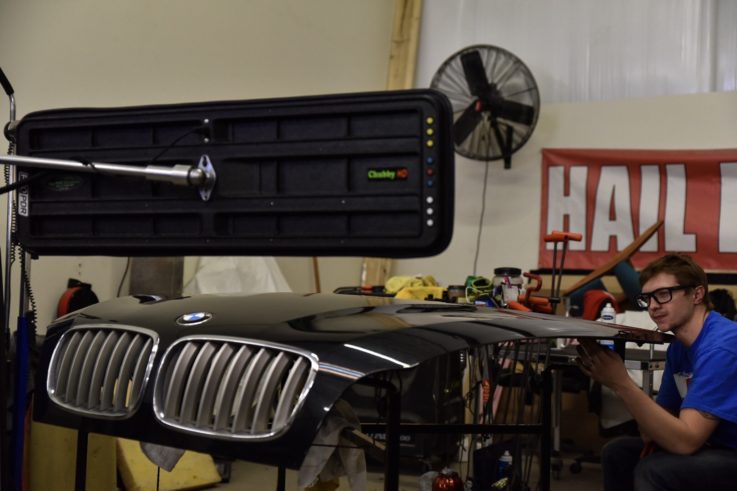In a county like Denver where hailstorms often occur, many vehicle owners face the nightmare of hail damage on their cars. Minor automotive collisions or hailstorm damage may result in dents and dings on the exterior of vehicles. Although it does not take much impact to make dents, it can be disproportionately inconvenient for vehicle owners. This is because ding repairs can be complex and extensive. Fortunately, the modern age has introduced new and innovative techniques to simplify dent removal: Paintless Dent Repair (PDR). Vehicle owners prefer PDR to traditional dent repair. This is because it is an efficient and affordable alternative to traditional auto body repair. But how does PDR work?
A Quick Guide to Paintless Dent Repair: What is it?
In the past, vehicle repair specialists installed new stock pieces to replace dented portions, suctioned the dent(s) out, and re-applied a fresh coat of paint to cover up the repair. However, this traditional practice is no longer the optimal method for dent repair; instead, body shops tend to use PDR or Paintless Dent Removal.
Although PDR has been around for many years, it has only become the go-to solution for small dent repairs recently. This technique involves re-shaping the dents behind the damaged area to avoid leaving any traces of evidence before the dent. Unlike traditional body repair, PDR does not require paint or body fillers. The technicians determine the best way to access the dented area through a window opening or by removing the inner panels. After that, they can start working on the outer edge of the dent. This is by massaging the metal in its original position. The damaged portion of the vehicle gets smaller until it disappears. However, if an automobile has a dent with sharp edges or the indented metal is near the side of the panel, then the PDR won’t work well.
4 Paintless Dent Repair Benefits You Didn’t Know
Whether you want to save money and effort or just make an educated decision about vehicle repairs, there are several factors in why car owners choose Paintless Dent Repair over the classic auto body repair.
It maintains the value of the vehicle
Minor body damage to vehicles can drive down its value and put off potential buyers and dealers. Since PDR does not require a new coat application to cover up the repair that took place, its original strength and value remain.
It is an environmentally-friendly option
PDR does not only help you save time and money, but it can also protect the environment. If you decide to get your vehicle fixed with Paintless Dent Repair, you never have to use toxic materials and solvents. The process does not require paint thinners and paint removers. It avoids toxins being released during the repair and ensures that there is less paint created in the first place.
It is cost-effective
PDR takes lesser time than traditional vehicle repairs, so labor costs are considerably lower. Moreover, you can also disregard the cost of materials such as primer filler and auto paint. This can help cut down on cost. It is essential to keep in mind that the price may vary depending on the dent location and depth of the damage.
Insurance companies cover the cost of work
Another advantage of Paintless Dent Removal is that insurance companies often cover the cost of the work. This is due to its affordability. If you are not sure about the process of filing an insurance claim, talk to the experts from an auto body repair shop since they often work with major insurance carriers.
The next time your vehicle gets a scratch or dent, remember that there is an economical alternative to traditional auto body repair. Paintless Dent Repair can save you time and money while maintaining the value of your vehicle. If scratches and dents are marring the aesthetic beauty of your car, check out Tip Top Auto Hail in Denver. Learn how our premium Paintless Dent Repair process can work for you. Call us at (303) 868-1270 for an initial assessment or fill out the form on our site for more information and pricing.

